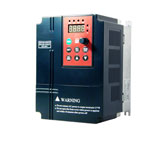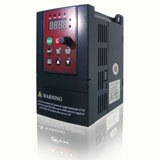VFD FOC vs. DTC
After the PWM-VSI (Volts/Hertz and slipping function), all can be seeing in the other hand is a kind of FOC, where we can uncouple both d -axis and q-axis like in a DC Machine. We remind that DTC is just a simplification of FOC toward torque control. After, just for simplify, we get the DSVM , with similar dinamic but with less ripple state in torque, flux and current. In my short understanding, I see that the state of art are the last development in three multilevel inverter (e.g. with diode clamped), besides of SVPWM and his application. In terms of power development, I see that the Japanese School (Mitsubishi/Hitachi/Yaskawa) are looking for energy saving solutions, while the Germany School (Siemens) and others in Europe are looking for generalize his applications. In fact, we cannot forget of good solutions reached by European team of Danfoss, ABB, Baldor (USA), Lenze, Bosch....
I agree that the important is the motor model accuracy. And in this case win who get the better estimation block, I mean, the most sophisticated estimator. In all method of Field Orientation the knowledge of the flux is the most important point to performance in high control of torque, and consequently precision control in speed and position too.
Above all, in my opinion is the application (needs) that make the rule. If we need high power motor in speed control, three level could be a good solution. If we need a torque control, in medium and high power control (above 50kW), I understand that any FOC solution is very well used. But the better is if we can close the loop in a PMSM motor. In this case, just for lower power application (until 50kW), the performance, stability and save energy doesn't reached by any other technology. The talking could go ahead in terms of electronic powers devices (SiC and others), or full sensor technology based in nanotechnology deposited in all places of the motor (nanosensor deposited) and so on, that will be a real revolution in industry since the time of Blashke's development and Plunkett's development.
I agree that the important is the motor model accuracy. And in this case win who get the better estimation block, I mean, the most sophisticated estimator. In all method of Field Orientation the knowledge of the flux is the most important point to performance in high control of torque, and consequently precision control in speed and position too.
Above all, in my opinion is the application (needs) that make the rule. If we need high power motor in speed control, three level could be a good solution. If we need a torque control, in medium and high power control (above 50kW), I understand that any FOC solution is very well used. But the better is if we can close the loop in a PMSM motor. In this case, just for lower power application (until 50kW), the performance, stability and save energy doesn't reached by any other technology. The talking could go ahead in terms of electronic powers devices (SiC and others), or full sensor technology based in nanotechnology deposited in all places of the motor (nanosensor deposited) and so on, that will be a real revolution in industry since the time of Blashke's development and Plunkett's development.



